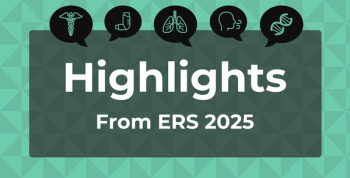
Phase 3 Ritlecitinib Trial Uses Synthetic Controls to Test Higher Dose Efficacy
Key Takeaways
- The study uses external and synthetic placebo controls, eliminating direct placebo randomization, ensuring all participants receive active treatment.
- Ritlecitinib 100 mg daily is being evaluated for superior efficacy in severe AA compared to the 50 mg dose and placebo-derived controls.
The trial evaluates ritlecitinib's efficacy for severe alopecia areata, utilizing innovative external placebo controls for enhanced patient outcomes.
This article originally appeared on
A new phase 3, randomized, double-blind study (
Key Findings and Trial Design
The pivotal aim of this phase 3 study is to determine whether ritlecitinib 100 mg QD provides superior scalp hair regrowth compared with the approved 50 mg dose and with placebo-derived controls. The primary endpoint is the proportion of participants achieving a Severity of Alopecia Tool (SALT) score ≤20 at week 24 versus an external placebo control group.
All participants will receive active treatment, either 50 mg or 100 mg QD, with no randomization to placebo, a significant methodological departure from traditional randomized controlled trials. As stated by the investigators, “no patients will be randomized to placebo, and all recruited patients will receive ritlecitinib.”
Participants assigned to the 50 mg QD arm who remain nonresponders at week 24 (SALT >20) will be re-randomized 2:1 either to continue 50 mg or escalate to 100 mg through week 48. This approach enables within-patient efficacy comparisons while maintaining blinding and treatment continuity.
Scientific and Clinical Rationale
Despite recent therapeutic advancements, current treatments for severe AA demonstrate limited efficacy. Across major JAK inhibitor trials, 70–87% of patients with severe AA do not achieve SALT ≤20 at week 24 on approved doses of ritlecitinib, baricitinib, or deuruxolitinib. Even after extended treatment, up to 63% of patients fail to reach this threshold by weeks 48–52.
Pharmacokinetic and exposure–response modeling suggests that higher ritlecitinib doses may yield additional clinical benefit. The study rationale cites that “the exposure–response relationship for ritlecitinib indicates that doses higher than the approved 50-mg QD regimen may have clinically meaningful additional efficacy."
Supporting evidence from other immune-mediated diseases demonstrates that doses up to 200 mg QD were “generally safe and well-tolerated," providing a sound foundation for evaluating the 100 mg QD regimen in AA.
External and Synthetic Placebo Controls
The defining innovation of this study lies in its use of external and synthetic placebo control arms, derived from prior clinical trial data in the ALLEGRO program. These controls allow rigorous efficacy comparisons without withholding active treatment from any participant.
The external placebo control is composed of matched patient-level data from participants previously randomized to placebo in ALLEGRO trials, adjusted through propensity score weighting to balance demographic and clinical characteristics.
The synthetic placebo control extends this framework by applying longitudinal statistical modeling to extrapolate outcomes at week 36, beyond the time frame captured in the pivotal 50 mg trial. As detailed by the investigators, this allows assessment “over a longer timeframe than captured in the pivotal study of ritlecitinib 50-mg."
Comparisons between active treatment and control groups will be analyzed using Bayesian beta-binomial models, providing flexible yet robust inference under uncertainty.
Ethical and Methodological Justification
The decision to eliminate placebo randomization is grounded in both scientific evidence and ethical considerations. Across prior AA trials, placebo response rates for SALT ≤20 are consistently 1–6% at week 24, indicating minimal benefit to continued inclusion of placebo arms. Moreover, delaying treatment in AA “has been shown to reduce the likelihood of treatment response."
By leveraging existing placebo data, the current design minimizes participant burden while maintaining comparative validity through rigorous statistical adjustment. This methodology aligns with recommendations from regulatory bodies such as the US FDA and European Medicines Agency (EMA), which increasingly endorse synthetic and external control arms in rare and immune-mediated diseases.2
This study therefore exemplifies a pragmatic, patient-centered model that preserves internal validity while ensuring equitable trial participation.
Efficacy and Safety Assessments
The primary endpoint is the SALT ≤20 response rate at week 24 for ritlecitinib 100 mg versus the external placebo control. Key secondary endpoints include:
- Week 24 comparison of ritlecitinib 50 mg versus external placebo;
- Week 36 comparison of ritlecitinib 100 mg versus synthetic placebo;
- Week 48 comparison of 100 mg versus 50 mg among week 24 nonresponders; and
- Change from baseline in SALT score at week 24 between ritlecitinib 100 mg and 50 mg QD.
Secondary measures will also assess eyebrow and eyelash regrowth (EBA/ELA scales) and patient-reported outcomes such as the Patient Global Impression of Change (PGI-C), Patient Satisfaction (P-Sat), and Alopecia Areata Patient Priority Outcomes (AAPPO).
Safety evaluations will include routine adverse event monitoring and laboratory assessments. Approximately 550 participants are expected to enroll across 11 global sites, with up to 50% adolescents (ages 12–17).
Statistical Power and Sensitivity Analyses
Sample size calculations ensure high statistical power (>88%) for the primary comparison with a type I error rate below 0.025. Sensitivity analyses will assess robustness to unmeasured confounders and quantify potential bias directionality. Baseline balance between treatment and external control groups will be confirmed using standardized mean differences prior to analysis.
For the 100 mg versus 50 mg nonresponder comparison, an external ritlecitinib 50 mg control group derived from ALLEGRO data will augment the internal dataset, ensuring sufficient precision to detect clinically relevant differences in treatment response.
Clinical and Research Implications
If successful, this study may redefine dosing strategies for ritlecitinib and establish new standards for clinical trial design in dermatology. The results will clarify whether 100 mg QD offers enhanced regrowth potential for patients with severe, refractory AA while maintaining acceptable safety.
More broadly, the methodology provides a proof-of-concept for replacing placebo arms with external or synthetic controls in chronic diseases where placebo effects are stable and minimal. As the authors conclude, “to our knowledge, this is the first clinical trial using this methodology in dermatology and in patients with AA,” emphasizing its potential to influence future dermatologic and autoimmune research.
Conclusion
The phase 3 trial of ritlecitinib 100 mg QD introduces an ethically progressive, statistically rigorous framework for evaluating higher-dose efficacy in severe AA. By leveraging validated external data and avoiding placebo randomization, it prioritizes patient welfare while preserving analytical precision. Results from this study will inform dosing optimization for ritlecitinib and potentially guide the evolution of clinical trial methodology across dermatology and immunology.
References
- King B, McMichael A, Sinclair R, et al. Rationale and design of a novel, phase 3, external and synthetic placebo-controlled clinical trial of ritlecitinib 50 mg and 100 mg for alopecia areata. Dermatol Ther (Heidelb). Published online October 14, 2025. doi:10.1007/s13555-025-01543-7
- Thorlund K, Dron L, Park JJH, Mills EJ. Synthetic and external controls in clinical trials - A primer for researchers. Clin Epidemiol. 2020 May 8;12:457-467. doi: 10.2147/CLEP.S242097. PMID: 32440224; PMCID: PMC7218288.
Newsletter
Stay ahead of policy, cost, and value—subscribe to AJMC for expert insights at the intersection of clinical care and health economics.













































